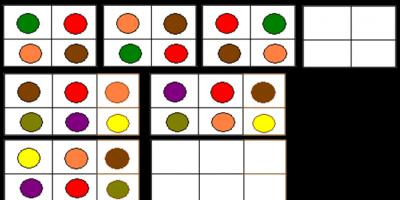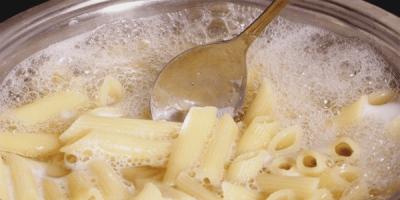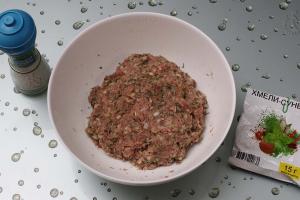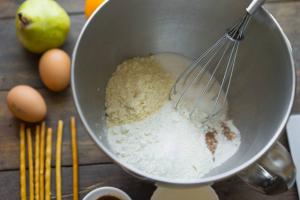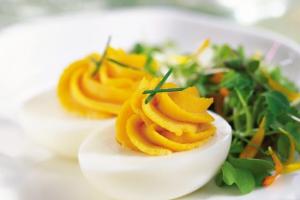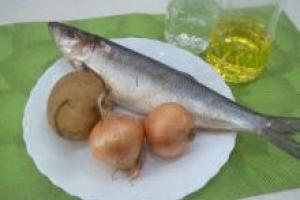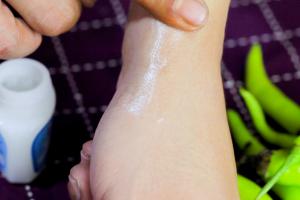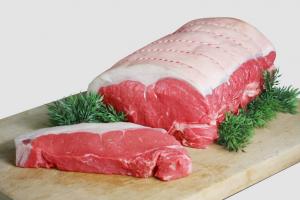It would seem a strange question: how to cook spaghetti correctly? Well, what difference does it make what you cook: spaghetti or horns, they are pasta and in Africa they are pasta. But no.
First of all - will you have spaghetti as the first course or the only dish served at the table? If they are the first course, then the portion per person will be approximately 50g, and if it is not only the main, but also the only dish, then the calculation should be 100g per person.
Now choose a suitable pan. It should hold a lot of water. Experts disagree on exactly how much water should be poured: they call proportions from 1:3 to 1:10. In fact, it is important that the spaghetti does not stick together during cooking and feels free. Therefore, take a large pan and fill it 2/3 with water. Why is this so? Yes, because during cooking the spaghetti will begin to foam and may “run away”, flooding the burner and the stove. Give them some space. That's how they are, freedom-loving people.
To cook spaghetti, it is better to choose a pan with a wide bottom. It would be even better, of course, to cook them in a special bowl, rectangular, corresponding to the length of the spaghetti. But we’re not in a restaurant, so we just take a wide-bottomed pan, fill it 2/3 full with water and bring the water to a boil. Then add salt and place the dry spaghetti in boiling water. Under no circumstances should you break spaghetti. This could even give Italians a heart attack, because the length of spaghetti, in their opinion, is ideal, 25-30 cm. Naturally, we see that spaghetti “does not fit” into the water immediately and entirely. It’s okay, literally in half a minute the part of the spaghetti that got into the water will become plastic, and we will be able to put all the spaghetti in the pan without breaking it.
After that, mix. This should be done to prevent the pasta from sticking together. You can, of course, stir with any spoon, but you need to ensure that even with vigorous stirring, your spaghetti remains long and does not break. Therefore, a wooden spoon or spatula is more convenient.
So, the spaghetti has boiled, and you have slightly reduced the heat under the pan. Do you think that everything is over and you can distract yourself? Nothing of the kind. Spaghetti loves to be cooked “in company”, and one should not forget about it. Therefore, stir them periodically, and at the same time monitor the degree of their readiness.
Some housewives add vegetable oil to the water, about 1-2 tablespoons. This will not spoil the spaghetti; housewives believe that this will protect the spaghetti from sticking together, but, in general, spaghetti is not prone to sticking too much if there is enough space for it in the pan and you don’t forget to stir it. Therefore, whether to add oil to the water when cooking is up to your personal taste and culinary experience.
So, we cook the spaghetti and monitor its readiness. Why is this necessary? Yes, because Italians do not approve of overcooked pasta, preferring to finish cooking when the spaghetti has reached the “al dente” state, “to the teeth.” Over time, you will learn to detect this state of slightly undercooked spaghetti not only by tooth, but also by eye. For now, let's do it simpler. Read the recommended cooking time on the package. Usually it's 8 minutes. Well, reduce the recommended cooking time by one minute, and you will just get that “al dente”, when, when cutting soft pasta, a small dark spot remains in the middle. You may ask, why is this so? But because the spaghetti, when you throw it in a colander, will continue to “cook” for some time under the influence of its own heat. And they’ll just finish cooking.
Don’t rush to throw out the water drained from the spaghetti! You may need it for the sauce if the sauce is too thick.
Drizzle the spaghetti with olive oil or butter, whichever you prefer, and it's time to plate the spaghetti.
Rinse? No, you don't need to rinse the spaghetti. The best thing is if, immediately after draining the water, you place the spaghetti on plates. But, if suddenly you didn’t calculate the time, and your spaghetti lay in a colander longer than required, you can pour boiling water over it.
The plates on which you will place the spaghetti should be deep and, preferably, heated, so as not to take away the heat from the spaghetti.
That's all, put the sauce on top of the spaghetti, and bon appetit!
Add a comment
All comments
From | Tue, 28/11/17 - 18:12
cool it turned out very tasty
From anonymous| Mon, 03/11/14 - 10:51
If anyone wants spaghetti, you need to put oil in a saucepan and wait until it boils, then add salt and add spaghetti. Cook for 8 minutes.
From | Mon, 18/08/14 - 19:51
Thanks a lot. All worries dispelled! Now everything will be fine :)
From mega| Fri, 28/03/14 - 17:37
From IRINA| Sat, 09/11/13 - 23:03
I heard that after cooking you need to add a SMALL amount of water, because... The pasta continues to cook without water for some time. 1 glass is too much, you need 80 grams of the water in which they were boiled.
From Julia| Wed, 06/11/13 - 21:00
You've probably eaten pasta more than once that stuck together after cooking. And why would you otherwise read this article? We will share with you the secret of how to cook pasta so that it does not stick together.
Let's consider several points in the order of preparation of the product. The main one is the sixth one, but we advise you to read the full list to be sure!
What can I do to prevent pasta from sticking together?
- Buy quality pasta– this is very important. If you use all the points further, they will definitely not stick together. But a low-quality cheap product can not only stick together, but also boil and turn into something inedible.
- Boil pasta in plenty of water. Usually the advice on the packaging is: 100 grams of product per 1 liter of water. You can add a little more pasta, but you shouldn’t pour a 1-kilogram pack into a 3-liter pan.
- Add some sunflower oil to water. Literally a tablespoon in a large pan or a few drops in a small one. You can also use olive or butter.
- Don't overcook the pasta. If you boil them, they will not only stick together, but will also taste unpleasant. Cheap pasta may become overcooked before cooking. Yes, there are such low-quality products. To avoid overcooking the pasta, periodically catch one pasta and taste it.
- Don't rinse the pasta. Many people still have the Soviet habit of washing pasta. You shouldn't do that these days.
- Add sunflower oil to the pan. After you have removed the pasta from the stove and drained the water, add a little sunflower oil to the pan (from a teaspoon to a tablespoon) and stir the pasta to coat it in the oil. This is perhaps the most important secret from the series “ what to do to prevent pasta from sticking together».
- Do not cover the pan with a lid. After you have mixed the pasta with butter, leave it to cool, but do not cover it with a lid.
If, after these detailed instructions, your pasta still sticks together, which is extremely unlikely, try buying other pasta of better quality.
Probably one of the most popular side dishes, and certainly the easiest to prepare, is pasta. It would seem that what would be simpler is to throw them in water and let them cook, but even here you need to know, correctly, otherwise even such a simple dish may not work out.
Usually we do this: put water in a pan, wait until it boils, add salt and pasta and cook until done. As a rule, there is not very much water - usually just as much as fits in the pan, but this is not entirely correct. In addition to the amount of water, many different factors influence how the finished pasta turns out.
The most common problem is that the pasta turns out sticky. This problem can occur for several reasons. The most common is the quality of the pasta. The cheapest pasta is made using flour from soft wheat of the lowest quality, and it is good if it is made from wheat at all. No matter how good a specialist you are, you still won’t be able to cook them properly. As a rule, such pasta has a dirty gray tint, but recently manufacturers have resorted to various tricks to hide it, in particular, they use dyes, often an elegant and appetizing yellow color. This color of pasta indicates that perhaps they have something to hide, but this is not an indicator of quality, since quite conscientious manufacturers can dye pasta, simply so that the product does not look pale against the general background among competitors with cheerful colors. It is worth noting that in the food industry, carotenoids are usually used as yellow dyes, and they are not harmful, quite the contrary.
An indicator of the quality of pasta will be the number of crumbs and broken pieces at the bottom of the bag. It is clear that during transportation anything could happen to them, and they could break, but good quality pasta will not crumble or crack into small pieces. The chips on them will be shiny and even, as if they were made of durable but fragile plastic. One way or another, why do you need broken pasta in principle? Buy ones that have absolutely no crumbs at the bottom of the bag and you can't go wrong. It is also worth paying attention to the appearance; their color should be uniform, the surface should shine a little, and also high-quality products can have a translucent effect, like good porcelain - it is especially noticeable if you decide to cook pasta or, for example, , shells, that is, curly and voluminous pasta, as well as thin noodles.
Choosing the right amount of water - this skill is also included in the mandatory training program. According to the classic Italian formula, take a liter of water per 100 g of pasta. Of course, if we are not planning a dinner party or an exhibition of our own achievements, then we can take a little less water, the main thing is that it is at least seven times more in weight than pasta - in a large amount of water pasta will almost certainly not stick together, and water will not will turn into a terrible slime, which you will then have to wash out. It is best not to use your eye, but to measure the required amount of water before cooking the pasta.
Pasta is placed only in intensely boiling salted water, to which you can also add a little vegetable oil - this will be an additional guarantee of an acceptable result. After the water boils again, the pasta must be stirred so that they all separate from each other and from the walls and bottom of the dish. In the future, you can mix them again, after about a couple of minutes, no more - then you shouldn’t do this, since the pasta will already be soft, or at least, if necessary, this should be done carefully. You should not be guided by the cooking time indicated on the package - you may need a completely different amount of time, since it depends on the amount of water and pasta, and on the intensity of the flame, and on the quality of the gas, and on the hardness of the water. In addition, only you know how to cook pasta for yourself - until the Italians’ favorite “al dente” state or until fully cooked, as is customary here, so you need to try them periodically so as not to miss the right moment, otherwise they will be overcooked and again - they will stick together.
Sticky pasta is a nuisance that happens to many housewives, both experienced and new to the culinary arts. To avoid such mistakes, check out these tips on how to cook long pasta.
Pasta is an elementary dish if you know some secrets about choosing products and cooking technology. Traditionally, Venice, or even the whole of Italy, is considered the birthplace of pasta, although thin threads of dough, which were popular in Arab, Indian and Chinese cuisines of the 12th–13th centuries, are known from the chronicles of that time.
Today macaroni is a common cheap dish, which when cooked is called pasta. There are many types and varieties of pasta (short, long, curly), which are served with different sauces, seasonings and additives.
Long pasta - spaghetti - is very popular. This is the general name for pasta that appears in the form of long strings, 1 to 2 mm thick. Initially, the length of this type of paste was 50 cm. On the shelves of modern stores there are specimens no longer than 27 cm.
If you don't know how to cook pasta correctly, here are 10 steps to create the perfect pasta:
Step #1. When choosing pasta, give preference to products made from durum wheat.
To do this, you will need knowledge of paste labeling. On the manufacturer’s packaging, look for the letter A, the indication “premium flour,” class 1 or “durum wheat.” Imported products are marked semolina di grano duro/durum.
Step №2. To prepare an appetizing dish, you need to know how to cook pasta. To cook spaghetti properly, use a large pan (about 5 liters) so that you have a better chance of preventing the pasta from sticking together. In a large container, the elements will be separated from each other, this will ensure readiness and prevent the formation of a lump.
Step #3. If you don’t know how to properly cook long pasta, then stick to the gold standard: 100:1000:10. This means that 100 grams of dry product will require 1 liter of water and 10 g of table salt.
Step №4. Pour 1 liter of water into a large container and add salt, close the lid and set to maximum. Bring to a boil.
Step №5. To prevent spaghetti from sticking together, add a tablespoon of olive oil to the water.
Step №6. Place the pasta into the boiling water without breaking it. Place it vertically or slightly inclined towards the edge of the pan and wait 10-15 seconds until the part that is in the water softens and sinks lower.
Step №7. During cooking, stir the food every 2-3 minutes with a wooden spoon.
Step №8. The most important question is how long to cook pasta? To find out the answer, read the instructions on the package. On average, it takes 12 minutes to cook 100 g of spaghetti. Pasta is considered ideally cooked al dente - “to the tooth”. To bring the spaghetti to this state, 10 minutes is enough. The pasta will be soft on the outside, elastic, and firmer on the inside.
Step #9. Forget the colander. Leave grandma's tool on the shelf; it will not be useful for making durum wheat pasta. To rinse such food is to hopelessly and irrevocably spoil the product. Drain the water into a container where you will prepare the sauce. Add 1-2 tablespoons of olive oil or butter to the spaghetti pan and stir.
Step #10. Serve spaghetti freshly cooked and hot. Complete the dish with sauce.
For the bolognese sauce you will need:
- Minced meat - 500 g.
- Tomato juice/paste - 200 ml/ 3 tablespoons per 200 ml of water.
- Dry red wine – 100 ml.
- Onions and carrots - 1 pc.
- Garlic - 3 teeth.
- Hard cheese (Parmesan) - 150 g.
- Green.
Chop the onion and carrots and sauté for 10 minutes. Add minced meat, fry, pour in wine. Simmer for 10–15 minutes and pour in tomato juice. Bring to readiness for 10 minutes, place on spaghetti, sprinkle with cheese and herbs.
For bechamel sauce use:
- Minced meat - 500 g.
- Milk - 700 ml.
- Onion - 1 pc.
- Butter - 50 g.
- Flour - 3 tbsp. l.
- Garlic - 2 cloves.
Fry the onion and minced meat in vegetable oil. In a separate frying pan, melt the butter and add flour to it, stir the resulting mixture until a thick mass is obtained. Gently pour warm milk into the pan in a thin stream. Don't stop stirring so that the fried flour doesn't clump together. Add chopped garlic, nutmeg, salt and pepper (to taste) to the resulting mixture. Mix the sauce with the minced meat and place on the spaghetti. Garnish with chopped herbs and grated cheese.
This hearty and tasty dish will be enjoyed by family and guests. Experiment with sauces: make a simple tomato dressing or cream cheese sauce with mushrooms and cream.
Don't be afraid to gain weight: durum wheat pasta is a source of healthy carbohydrates. This lunch is healthy, satisfying and safe for your figure.
Bon appetit!
In Russia they treat pasta quite familiarly. Place them in a tiny saucepan, cook for 20 minutes, then rinse for a long time with cold tap water. Or worse - hot. And then they wonder why there is a slimy monolithic piece on the plate, and not a crumbly mass.
How to cook pasta so that it doesn't stick together? Each housewife has her own tricks. But some people have been cooking pasta incorrectly for many years, making mistakes over and over again.
Which pasta to choose
In Soviet times, pasta was made from the worst flour. The color of the raw ones was dirty white or gray. And no tricks helped. After cooking, the result was a sticky, unappetizing mass. They put butter in it, washed it with plenty of cold water, and fried it in vegetable oil. And still it was a gray slippery block. And besides, it was disgusting not only in appearance, but also in taste, this mess bore little resemblance to good pasta.
Proper pasta should have a light golden, cream or yellow hue. It is difficult to spoil such a product, but it is possible. If you try hard. There are recommendations to look for the phrase about durum wheat on the packaging. You can write anything you want. Focus on color.
Not everyone has the opportunity to bring real Italian pasta to the table. But even among Russian producers there are quite normal ones who make good raw materials for our dishes.
How much water do you need to cook pasta?
The generally accepted norm is 1 liter per 100 g of raw materials. But what should large families do, where they cook 2 kg of pasta at a time? Looking for a two-bucket bucket? Or cook several times? A mother of many children will then have to stay in the kitchen. In this case, some relief may be possible. For example, for the same 2 kg, take a 10 liter pan. There will definitely be one like this.If desired, you can brew 500 g in a standard 3-liter kettle. And even with dumplings. You can get the recipe from any average Russian student. They know a great many like them.
Some recipes recommend greasing the walls of the dishes with any oil. And only then pour water. This is to prevent the pasta from sticking together. It’s immediately obvious that they didn’t study physics. Oil is lighter than water. Always. It will just float to the surface. So why the extra movements? It will be easier to splash a little oil directly into the pan.
Again, we recommend looking at the packaging. The manufacturer knows for sure. But here there is a trick. You have to try the pasta. Not with your fingers, as some sources advise. Well, do you crush it and what should you feel? And not by sticking to the plate. Even undercooked dough will stick if you smack it heartily onto any surface. You have to try it with your mouth.

It's simple: catch a couple of things, blow and try. But we don’t need foreign aldente. Everyone's teeth are different, and so are their taste preferences. Check readiness according to your feelings. The pasta is soft on the outside, but still hard on the inside - it will have to simmer for a few more minutes. The dough spreads in your mouth before it reaches your teeth - it’s too late to rush around, you’ve overcooked it and you can’t save it. The pasta is pleasantly springy, no longer hard, elastic - quickly turn off the heat, now is the perfect moment.
You need to start tasting the dough 2-3 minutes from the recommended time on the package. At least there's some benefit from it. Let's say it says 10 minutes. This means that after 7 minutes from the start of cooking you can taste it. Maybe it's time to drain?
Do I need to rinse pasta?
If you are preparing 100 g at a time, then it is not necessary. You will eat them right away. But when a batch is being prepared at the same time “to be left for tomorrow,” you will have to rinse it. Even super Italian foods can stick together if they are not consumed immediately.
Just don't do the five-minute rinse with hot water! Just put it in a colander and quickly pour cold water over it. Pour it over once, rather than open the tap and keep the colander running. That is, a bowl of cold water should be ready. They splashed it, mixed it, and let it drain.
Why is pasta washed with cold water? Because you need to stop the cooking process. After all, after throwing it into a colander, it still continues. A quick rinse with cold water stops this process while allowing the dough to remain hot.
Remember your childhood. Spaghetti was never cooked whole. They were always broken into smaller pieces. And what a pleasure it was to steal a whole pasta from under my mother’s hand and gnaw it raw!

With the advent of Italian recipes in Russian cuisine, the situation changed radically. Nowadays it is fashionable to cook spaghetti whole. Yes please! Do as you feel comfortable.
Of course, long spaghetti looks beautiful when serving a dish. But only if you offer such food to a child... Who is not yet a master of a fork... Be prepared to find pasta anywhere. On the table, floor, ears, hair, in hands. But not in the mouth. Don't try and break it.
It happens that your man does not recognize a fork as a tool for eating. This also happens. Try giving him whole spaghetti. Let's see what happens when he plays with the spoon. No amount of assurance that this is how they eat in Italy will save you from the righteous anger of your significant other.
So just act according to the situation.
How much salt do you need and when to add it?
Recommended dose - 1 tbsp. l. without top for 3 liters of water. Place it only after boiling. Here again we remember the school physics course. Salt water will take much longer to boil than fresh water. But if you are not in a hurry, you can put it directly into the cold one.
Some even replace salt with bouillon cubes. This is perfectly acceptable if the pasta is being prepared for savory dishes. Because a sweet casserole with the taste of seasonings and the aroma of mushrooms or meat is very much for everyone.
Classic recipe
Prepare to be constantly present at the pan while the pasta is cooking. Because you just have to turn away and they strive to either run away, or stick to the bottom, or stick together. Don't be afraid. Do it once and you will already know what and how.

You will need:
- saucepan, spoon, colander
- water 1 l
- pasta 100 g
- table salt 1 tbsp. l.
- vegetable oil 2 tbsp. l.
- bowl of cold water 1 liter
Sequence of actions. Pour water into a saucepan and place on high heat. Bring to a boil and let simmer for 1-2 minutes. This will allow any unpleasant odors to come out if tap water was used. Then add salt and oil and stir. Pour in the pasta and start stirring with a spoon.
Do this until the dough stops sticking to the pan. Usually 2 minutes is enough. During this time, the boiling water usually resumes. Turn the heat down to a minimum and periodically look into the saucepan. If foam appears, it must be removed. During cooking, stir the contents of the container again.
After 5-7 minutes you can taste the dough. How to do this is written above. Does the pasta taste ready? Turn off the heat and pour into a colander along with water. Pour cold from a bowl, stir to drain excess liquid and serve.
- If you are going to cook noodles, then the cooking time is no more than 4 minutes.
- Never cover a pot of pasta. The foam runs away from them faster than milk. If you don’t keep track, you’ll also be cleaning the stove.
- Often, pasta behaves perfectly during cooking, but after it sticks together. Stir them often in the saucepan until they cool completely. About once every 15 minutes. Then they won't stick together.
- Some recipes say that pasta should only be eaten freshly cooked. Allegedly, the next day, when reheated, they lose their taste. Nonsense. The whole country has eaten yesterday's pasta at least once in its life. No one vomited from “loss of taste.” Or serve your child freshly boiled with sugar instead of yesterday's, fried until crispy golden brown. What will he tell you?
- No matter how well the pasta is cooked, it will still stick together when it cools. To prevent this from happening, add a little oil to them immediately after cooking. Melted butter or vegetable, it doesn’t matter. And stir. After 15 minutes, stir them again directly in the saucepan. And then half an hour later again. So even after cooling they will remain crumbly.
How to cook pasta so that it doesn't stick together? Follow the recommendations, test for readiness and stir often. Then even pasta made from the worst flour will not turn into one large piece of boiled dough.
Video: how to properly cook pasta in a saucepan
